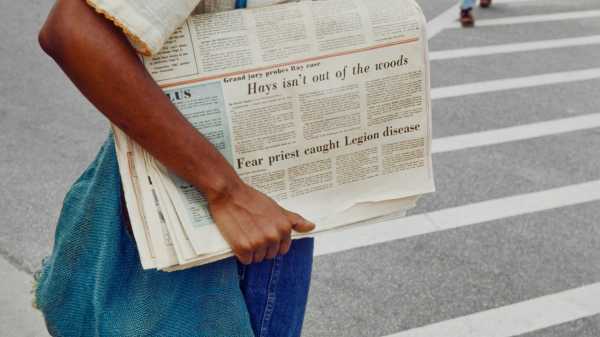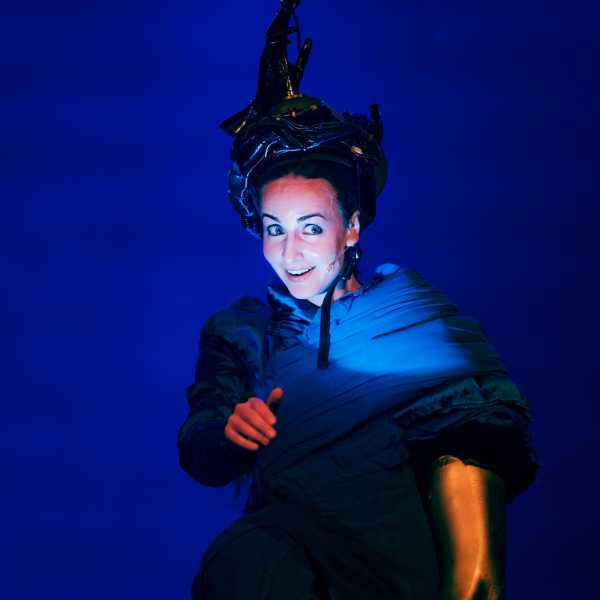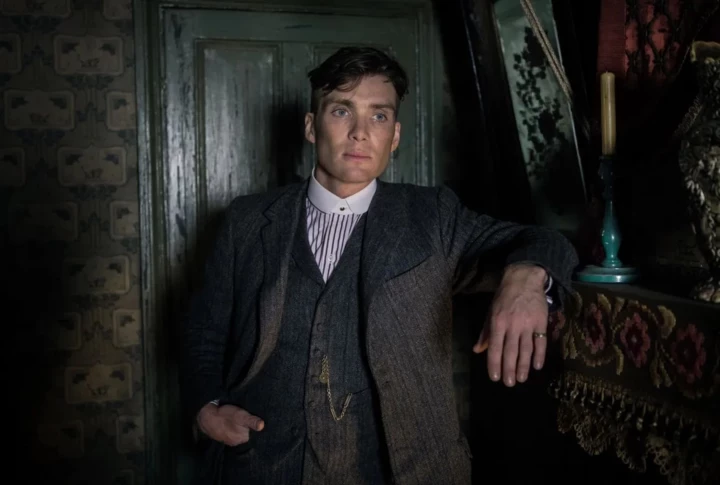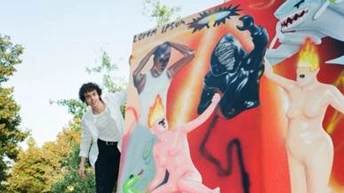
Save this storySave this storySave this storySave this story
Jackson Arn
The New Yorker’s art critic
You’re reading the Goings On newsletter, a guide to what we’re watching, listening to, and doing this week. Sign up to receive it in your in-box.
As late as 2007, the case could be made that some storage lockers in Chicago held the best photography collection in the United States. In the course of that year, the renter defaulted on payments, and everything inside, including many boxes bursting with negatives, was auctioned off to local collectors. One of these—think of him as patient zero—had enough taste to scan the negatives and post about them on Flickr.
Seventeen years, myriad copyright squabbles, incalculable praise, and one Academy Award-nominated documentary later, what do we know about Vivian Maier? She was born in 1926 and died in 2009, a few years before it had become routine to call her one of the best street photographers of the previous century. She was shy with most people and allergic to attention. She worked as a nanny and later had to rely on financial support from the people she’d once been paid to raise. A former employer recalled that Maier spoke to her children, the baby included, as though they were already grown.

Photograph © Estate of Vivian Maier / Courtesy Maloof Collection / Howard Greenberg Gallery
That recollection helps to clarify something about Maier’s photographs, more than two hundred of which appear in Fotografiska’s exhibition, opening on May 31, “Vivian Maier: Unseen Work”: innocence is nowhere to be seen in them, possibly because it doesn’t exist. Children look world-weary even when they’re horsing around. When adults show up, even their leisure looks laborious. Like all the best street photographers, Maier had a fine eye for bathos: a doll in a trash can, an old lady selling pretzels near a sign for a beauty school, a marquee for a Bing Crosby movie shining down on what looks like a corpse.
Maier’s finest images may be her self-portraits, in which she finds her frank, sharp, “Whistler’s Mother” face in a mirror and makes the rest of the world surround it. When I look at one and then think about all the other great works of art yellowing away in other forgotten lockers, I don’t know whether to laugh or cry.

About Town
Off Broadway
The final installment in the Irish Repertory Theatre’s Friel Project, Brian Friel’s “Molly Sweeney,” follows a functionally blind woman who is offered the possibility of regaining some vision. The operation, despite slim odds of success, seems like a no-brainer to her husband, Frank (an endearingly tedious John Keating), who lives for far-fetched, noble-minded enterprises, and to the ophthalmologist Mr. Rice (Rufus Collins), who sees “curing” Molly (a superb Sarah Street) as a way to resuscitate his once glorious career. Friel’s play, first performed in 1994, presents two would-be Pygmalions who fail to realize that their Galatea is already fully alive. Molly alone grasps the difference “between seeing and understanding”; Charlotte Moore’s economical yet elegant staging invites us to do so as well.—Dan Stahl (Irish Rep; through June 30.)
Art
In the four decades leading up to the Nazi dictatorship, Käthe Kollwitz was Germany’s howling, wrenching conscience. A retrospective at MOMA occasionally seems more intrigued by her views on war and labor strife than by the drawings, sculptures, and prints in which she expressed them, but the evidence speaks for itself: she had one of the most vivid graphic imaginations of the era. Bodies are forever trying and failing to merge in these images: mothers grip dead children, crowds march almost forward, profiles press into a single head. Unity is often the goal but never the reality; Kollwitz’s doubt is as powerful as her faith. She is, in other words, something subtler and more valuable than a crusader: a genuine artist.—Jackson Arn (MOMA; through July 20.)
Dance

Photograph by D. Matvejevas
The young Belfast-raised dancemaker Oona Doherty isn’t afraid of big music, or big emotions, or delving into anxiety. In “Navy Blue,” a heartfelt dance for twelve, set to Rachmaninoff and Jamie xx, Doherty combines lyricism and jaggedness, physical grace and what looks like an uncomfortable unravelling of the body, to produce a portrait of the discomfort of living—a “Rite of Spring” for our time. Both the movement and an insistent voice-over evoke humanity’s violent, self-destructive tendencies and the way that modernity has reduced everything to dollars and cents—and, underneath all this, mankind’s fundamental irrelevance. After all, as the voice-over says, we are just “a pale blue dot on a pale blue dot.”—Marina Harss (Joyce Theatre, June 4-9.)
Electronic Music
Under the alias Machinedrum, the electronic musician Travis Stewart conjures quirky, beat-driven music that distorts the dimensions of pop sounds into something otherworldly. A multiyear project called “Vapor City” envisioned urban planning through sound design, dedicating its songs to a dream metropolis, and the album “Human Energy,” from 2016, pursued the intangible in prismatic flashes. A new record, “3FOR82,” was inspired by a trip to Joshua Tree National Park, where solitude led Stewart to his old hard drives full of beats he had produced in the late nineties, using Impulse Tracker. The songs tap into the creativity that antiquated technology prompts, pulling an unconventional band of collaborators—aja monet, Tinashe, Jesse Boykins III, Topaz Jones, deem spencer, and more—into his superlunar orbit.—Sheldon Pearce (Market Hotel; June 7.)
Off Broadway

Photograph by Austin Ruffer
Photograph by Austin Ruffer
Julia Masli emerges from a dark corridor, a huge contraption looming over her narrow face—part witch’s hat, part Gigeresque GoPro lighting rig. “Ha ha ha,” she intones, the words so thickened by her Estonian accent that they sound like an owl hooting. Masli’s eldritch, exquisite show “Ha Ha Ha Ha Ha Ha Ha” was an Edinburgh Festival Fringe hit last year, a mix of elevated clown work (Masli operates in an improvisatory French bouffon tradition) and group-therapy session. Slowly, deliberately, she glides up to audience members: “Problem?” she asks. Whatever the problem is—sweatiness, grief, fear of failure on the night I saw it—she tries to solve it with what she has on hand, deploying a roll of electrical tape, for instance, to bind family members together, or exerting her weird, lachrymose compassion. “You’re amazing,” I heard her say to a woman with a hurt foot. “Your foot is metaphor.”—Helen Shaw (SoHo Playhouse; through June 8.)
Movies
In 1997, the Bulgarian-born, French-based filmmaker Mosco Boucault launched a series of documentaries about police investigations with “The Shooting on Mole Street,” centered on the killing of the fifteen-year-old Shafeeq Murrell, in the crossfire of a drug-gang war in Philadelphia. Boucault follows two police detectives (both white) in their maneuverings to meet and interrogate potential witnesses and suspects (who, like the victim, are Black); he encounters teens trapped in the carceral system and in cycles of violence, and neighbors whose mournful outrage at Shafeeq’s death is matched by fear of gang reprisals. Many in the neighborhood, struggling merely to live in peace, have the weary desperation of refugees at home.—Richard Brody (Streaming on OVID.tv.)

Pick Three
The staff writer Rachel Syme shares current obsessions.
1. Every summer, I attempt a rewatch of an old, multi-season television show; it provides a soothing activity to look forward to on sticky days. (Whenever I get overheated, I just think, At least tonight I’ll get to bask in the A.C. with my little show.) This year, I’m rewatching “Six Feet Under,” the HBO masterpiece from the early two-thousands. It’s even better than I remembered. The acting is so strange and spiky and surprising, and the cold opens of most episodes—usually showing the bizarre death of a random person in Los Angeles—are still harrowing and brilliant. I know that when I get to the infamous finale, I’ll be a wreck all over again.
2. I cannot stop listening to the songs from “Stereophonic,” a new Broadway play that follows a band that may or may not be based on Fleetwood Mac, as it pushes through interpersonal drama to record a new album. The play’s songs, by Will Butler, formerly of the band Arcade Fire, so perfectly mimic a seventies Laurel Canyon sound that you might think that you’ve stumbled upon a cache of lost Stevie Nicks B-sides.

Illustration by Celia Jacobs
3. I’ve been pressing Miranda July’s new novel, “All Fours,” into the hands of many friends. I read it in two sittings and was despondent when it was over. No book has so accurately captured the wandering years that many women experience during their thirties and forties, when we are no longer young but also not yet prepared to be considered old. The book does for perimenopause what Melville did for whales: it makes the subject seem epic and earth-swallowing.
P.S. Good stuff on the Internet:
- A social history of the cardboard box
- Björk’s springtime song
- The sundress discourse, explained
Sourse: newyorker.com






